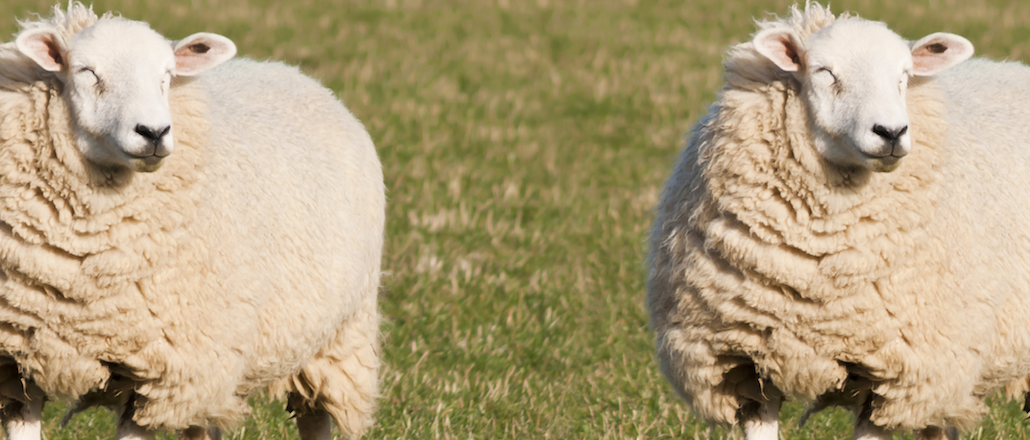
Mark Duffy has written the copyranter blog for 10 years and is a freelancing copywriter with 20-plus years of experience. His hockey wrist shot is better than yours. Follow him on Twitter.
The popular opinion — especially among you Digiday readers — is that the computer, attached to the Internet, has been a creative boon for creative people. That’s horse-hockey. It has created Sameness. Lazy, lame, search and steal, click and grab, copy and paste, Sameness.
As my boss clearly laid out last week reporting on #TheDress phenomenon, digital “journalism” is more and more every day becoming viral (and non-viral) Sameness. “News” publishers that viciously, regularly mock BuzzFeed also regularly copy and paste their posts. One of the most vicious (and effective) attackers, Gawker Media, steals BuzzFeed posts so often it makes them look like a sad clown holding a bloody knife — in fact, that should be their new brand mascot.
But the Sameness doesn’t stop with journalism. Veteran fashion designers bemoan the lack of creativity displayed by today’s graduating students. Earlier this year, famed British designer Zandra Rhodes told Marketing Magazine that the digital world provides little inspiration.
“The new digital designs are more obvious, and they lack repeat ingenuity,” she said. “I think the computer and the digital revolution has damaged creativity and drawing in textiles. It is too easy to lift photographs. It is too easy to mirror images to create repeats. As a result, motifs today are merely repetitive.”
Rhodes does point out the one and only benefit that the “digital revolution” has brought to the creative process: speed. But speed kills creativity, too. Especially advertising creativity, the thing that has owned my mind for 25-plus years. Tech-savvy digital ad agencies have forced traditional shops to speed up. That part is, partially, a good thing. But a vast majority of these digital agencies are creatively bereft hacks, long on buzzwords, short on original concepts. And no, getting your client onto that Snapchat thingie is not a branding concept. But they are now at an equal consideration level for almost all new ad business, dragging down the overall creative product with them.
Clients are equally to blame because they’re the ones buying this shitty creative work. They’ve swallowed, not just the hook, line and sinker, but the whole metrics and “eyeballs” fishing boat. The Mad Men level (not the TV show) of ad craft has never been longer gone.
But back to the Sameness. Ad industry-famous Joe La Pompe, who has remained anonymously “masked to unmask the copycats” since 1999, can show you how the “digital revolution” has been a coup for lazy creatives. He obsessively documents all the instances of obvious, blatant idea theft in advertising. Click the link and take on an amazing tour of unoriginality. He is doing the gods’ (Bernbach, Ogilvy, et al.) work.
In the 1980s, pre-Internet, if an agency stole another agency’s idea, it was big news, covered top-of-page by AdAge and Adweek. Now? It hardly ever gets a mention in the trades — because it happens all the time. And it happens all the time because search engines are now very precise robbery tools. Beats having to work, and the client will probably never find out, shhh…
I am not going to start linking to ads, but think of all the dogs and cats selling beer and cars other non-pet things you’ve seen, all the talking animals, all the awkward white people rapping, all the stupid, fake, similar “shockvertising” videos made to “go viral,” all the patronizing bullshit “femvertising” (more on that soon), all the dad- and mom-vertising that look and feel more like demographic study videos than ads.
When the uncreative duh Oreo Super Bowl tweet is held up high as brilliant real-time marketing, it’s maybe time for me to go start a Christmas tree farm in Vermont.
Homepage image via Shutterstock
More in Marketing

Pitch deck: How Amazon is recasting Twitch as a core part of its CTV pitch
Amazon is positioning Twitch as a defining asset in its CTV ambitions.

Netflix transforms former mall department stores into experiential venues
The location in Dallas opens this week, and one at the King of Prussia mall near Philadelphia opened last month.

Future of Marketing Briefing: AI has created a new talent paradox in programmatic agencies
The job isn’t execution anymore. AI handles that. The job is judgement.





